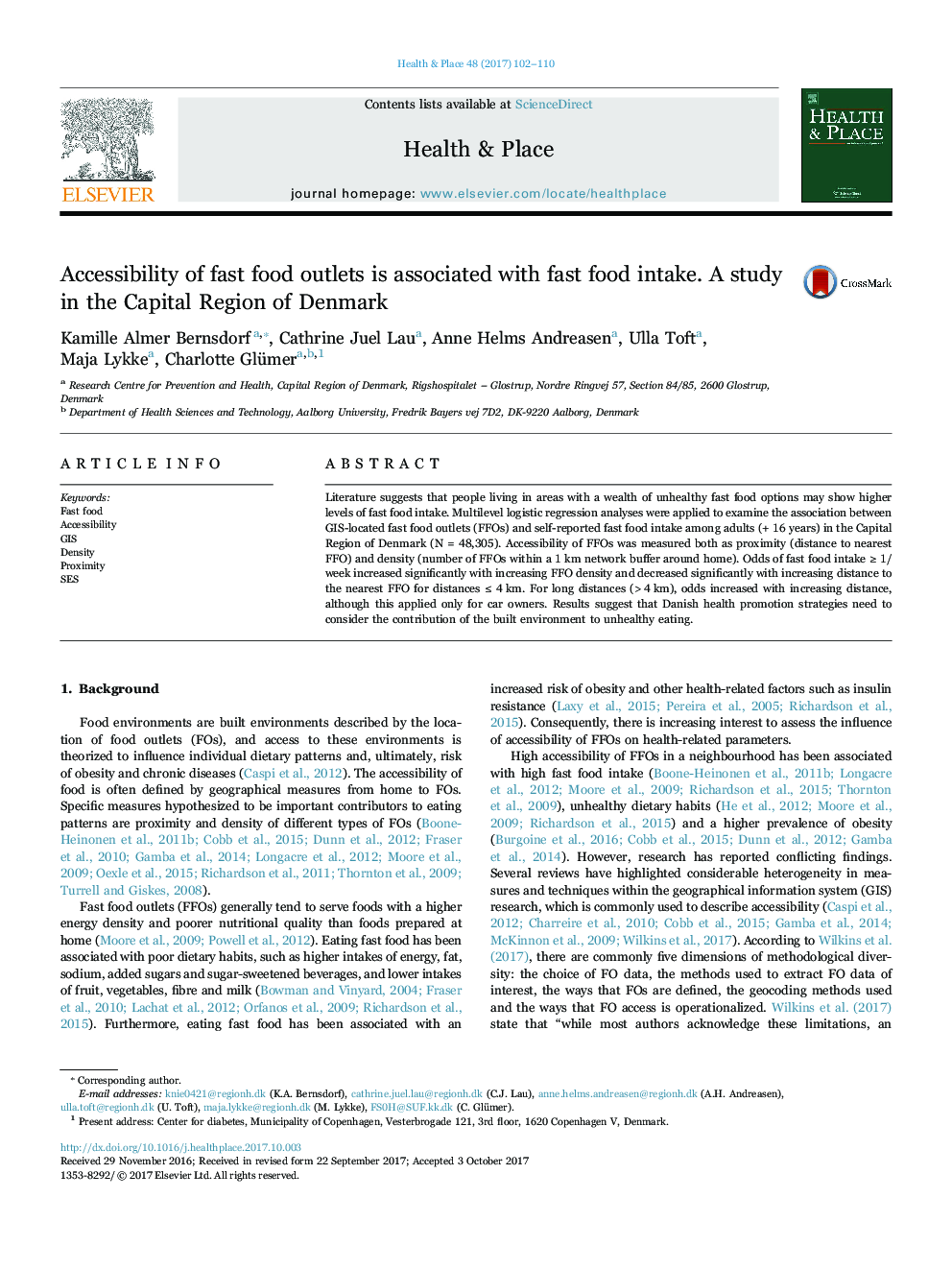| Article ID | Journal | Published Year | Pages | File Type |
|---|---|---|---|---|
| 5114746 | Health & Place | 2017 | 9 Pages |
Abstract
Literature suggests that people living in areas with a wealth of unhealthy fast food options may show higher levels of fast food intake. Multilevel logistic regression analyses were applied to examine the association between GIS-located fast food outlets (FFOs) and self-reported fast food intake among adults (+ 16 years) in the Capital Region of Denmark (N = 48,305). Accessibility of FFOs was measured both as proximity (distance to nearest FFO) and density (number of FFOs within a 1 km network buffer around home). Odds of fast food intake ⥠1/week increased significantly with increasing FFO density and decreased significantly with increasing distance to the nearest FFO for distances ⤠4 km. For long distances (>4 km), odds increased with increasing distance, although this applied only for car owners. Results suggest that Danish health promotion strategies need to consider the contribution of the built environment to unhealthy eating.
Related Topics
Health Sciences
Medicine and Dentistry
Public Health and Health Policy
Authors
Kamille Almer Bernsdorf, Cathrine Juel Lau, Anne Helms Andreasen, Ulla Toft, Maja Lykke, Charlotte Glümer,
